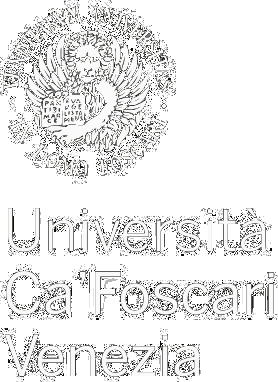Journal |
JoLMA
Journal issue | 5 | 1 | 2024
The Art of Mapping Between Land and Mind
open access | peer reviewed-
edited by
- Francesco Ragazzi - Università Ca’ Foscari Venezia, Italia; Paris 1 Panthéon-Sorbonne, France - email
In the creation of maps, scientific knowledge related to mathematics and physics combines with knowledge specific to graphic or artistic disciplines. Since all maps are artifacts whose aesthetic qualities convey information that simultaneously engages the fields of ontology, epistemology, and politics, they are objects of undeniable interest for philosophical inquiry. Following what has been termed “the cartographic turn in social sciences”, The Art of Mapping Between Land and Mind delves into two intertwining issues. On one side, it examines how the aesthetic properties of maps convey cognitive, cultural, and political meanings. On the other, it explores the role of visual arts in reflecting on cartographic thought, shaping both its methods and motivations. The volume is divided into four sections. Embracing the point of view of both the philosopher and the geographer, the first one sheds light on the relationship between epistemology and cartography (Kukla; Costantini; Tanney). The second addresses mapmaking as an art form (Tanca; Haugdal) or, conversely, considers maps from the perspective of their aesthetic properties (Török; Ogundiwin; Elhaik). The third focuses on the digital condition of today’s cartography (Tschochohei; Quaranta; Keller). Finally, the last section includes two contributions that represent attempts to guide cartography toward its future (Bosca; Ianniello). Opening this issue, a special essay by Elizabeth Povinelli offers a generous précis of her upcoming book.
Keywords Allegory • Cetaceans • Epistemology • Cartography • Clouds • Logic • Iconology • Eco-dystopia • Philosophy • Transcendental illusion • Sound • Territory • Machine gaze • Worlding • Physical Geography • Topographic mapping • Spatiality • Marine ecology • Semiotics • Race • Biston betularia carbonaria • Counter-mapping • Scopic regime • Nelson Goodman • Mind • Symbol • Ecology • Mapping processes • Geographic ontology • Immanuel Kant • Representational Risk • Drone photography • Symbolic Representation • Surveillance technologies • Italian colonial cartography • Blank spot • Fluidity • Indigenous cartography • Palimpsest • Hyperobjects • Monsters • Contemporary art • Conceptual cartography • Michel Serres • Walter Benjamin • Systematic ambiguity • Geographic Information Systems • Sámi Art • Sea • Libyan Desert • Epistemic Risk • Geontopower • Ryle • Geography • Recording • Aesthetics in Science • Mapping • Ocean • Art • Cartographic Styles • Map • System • Yorùbáland • Conceptual analysis • Maps • Strait • Digitalisation • Category-mistake • Digital • Vertical perspective • Climate-change • Hans Ragnar Mathisen • Settler Colonialism
Permalink http://doi.org/10.30687/Jolma/2723-9640/2024/01 | Published July 26, 2024 | Language en
Copyright © Francesco Ragazzi. This is an open-access work distributed under the terms of the Creative Commons Attribution License (CC BY). The use, distribution or reproduction is permitted, provided that the original author(s) and the copyright owner(s) are credited and that the original publication is cited, in accordance with accepted academic practice. The license allows for commercial use. No use, distribution or reproduction is permitted which does not comply with these terms.
-
Semiotics After Geontopower
Some Preliminary Thoughts - July 26, 2024
- Maps and the Epistemic Risks of Visual Representation
- July 26, 2024
- How Much Geography in Kant’s Critical Project?
- July 26, 2024
-
Ryle’s Conceptual Cartography
A Brief Introduction - July 26, 2024
- Mappers, Mapmakers, and Cartographers and Where to Find Them in Contemporary Art (a Modest Proposal)
- July 26, 2024
-
Dáiddakárta
Cartography in Contemporary Sámi Art Practices - July 26, 2024
-
Mapping a Blank Spot and Making Empty Spaces
Geographic and Cartographic Ontology in Italian Topographic Mapping of the Southern Libyan Desert in the 1930s - July 26, 2024
-
Territorial Images of Yorùbáland
Cartographic Styles and Symbolic Representation in the Mid-Nineteenth Century - July 26, 2024
-
The Strait and the Sea
Unsettling Scores - July 26, 2024
-
The World as Allegory in Cartography
Symbolic and allegorical reference systems in the aesthetics of digital cartography - July 26, 2024
-
A View From Above
Vertical Perspective in the Age of Total Images - July 26, 2024
-
Mural and Landscape Painting Revisited
The Art of Mapping the Digital Technosphere - July 26, 2024
-
The Evergrowing Map
A Fluid Account on Cartography - July 26, 2024
-
Biston betularia carbonaria
Repopulating Maps with Climate Monsters - July 26, 2024





